WELCOME TO CHELSEA
You are now in the royal borough of kensington and chelsea
The RBK&C was created in 1965 under the London Government Act 1963, which reorganised 86 boroughs and urban districts into 32 London boroughs and also created the Greater London Council. When it was was formed, it inherited the royal status from the previous ROYAL BOROUGH OF KENSINGTON whose status was granted in 1901 as it included of Kensington Palace, where Queen VICTORIA was born in 1819 and lived until her accession in 1837.
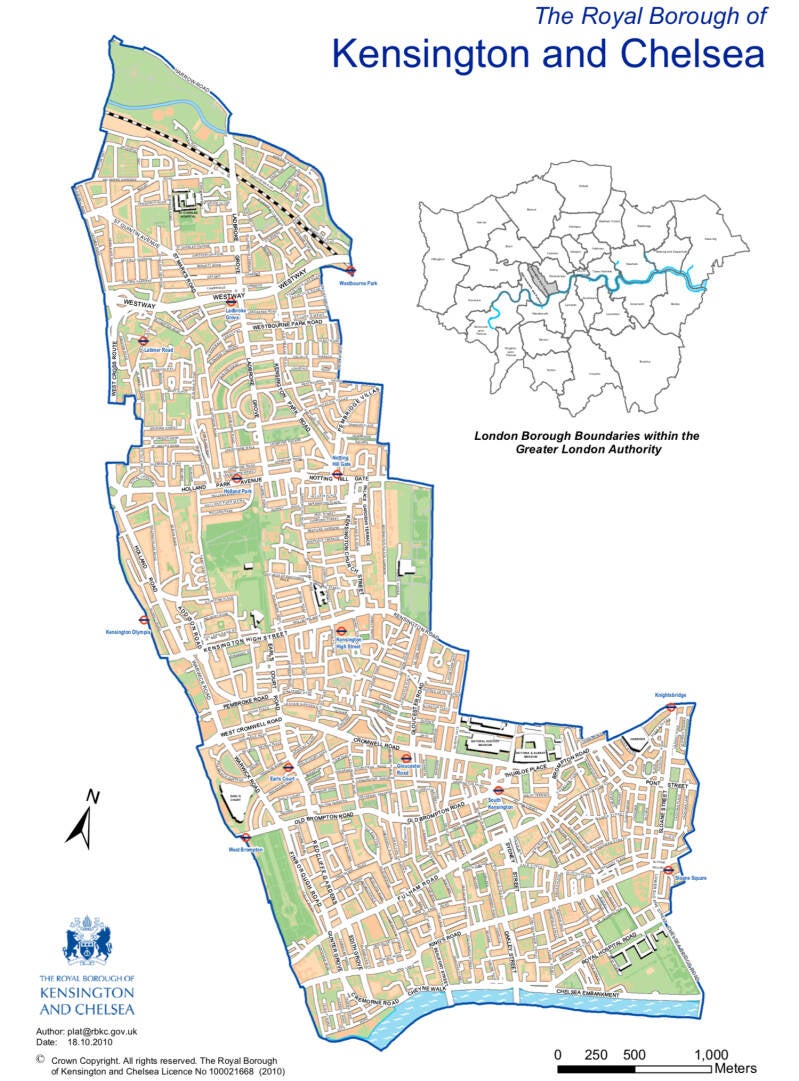
Coat of arms
Three Crowns on ermine symbolising the royal status, an Abbot’s Mitre signifying links between Kensington and the Abbey of Abingdon, and Chelsea with the Abbey of Westminster. The crest consists of a broom bush, referring to BROMTON, whose name was a corruption of ‘broom tun’, a gorse farm.
The boar is taken from the Arms of the De Vere family, Lords of the Manor of Kensington. The winged bull is associated with St Luke, the patron saint of Chelsea.

Pointed on the map, the ALBERT BRIDGE
Chelsea, anglo-saxon
Chelsea (alternatively Chelsey) was first a place name of Old English origin, and the most common theory of its meaning is chalk landing place, Calc-hyð = "chalkwharf". The Synod of Chelsea at Chelchith in 787 is often identified with Chelsea, London; but the first firm record is of a manor at Chelsea just before the Norman conquest, relating to the fact that Thurstan, governor of the King's Palace during the reign of Edward the Confessor (1042–1066), gave the land to the Abbot and Convent of Westminster.
From Fishermen and farmers to kings to artists
At the start of the 16th century, Chelsea was no more than a matter of dwellings for boatmen, fishermen and gardeners.
Then, some powerful people from London began establishing their country dwelling here. By 1694, Chelsea – already established as a popular location for the wealthy, and described as "a village of palaces" – had a population of 3,000. Even so, Chelsea remained rural and served London to the east as a market garden, a trade that continued until the 19th-century development boom which caused the final absorption of the district into the metropolis.
Art runs through Chelsea's history. From the Pre-Raphaelite painters to 1960s counterculture and the 2008 launch of the Saatchi Gallery, we take a trip through the decades.
Attracted to the area by low rents, studio space and access to the inspiration-giving river – while still remaining within easy reach of the West End and prospective buyers – the Cheyne Walk PRE-RAPHAELITE artists found themselves in a community of like-minded thinkers.
Café pier: well, in fact, is an old CABBIES’ SHELTER
By law, cab drivers could not leave the cab stand while their cab was parked there. This made it very difficult for them to obtain hot meals and could be unpleasant in bad weather. If they drove to a pub to buy food then they would have to pay somebody to look after their cab while they were inside, otherwise it was likely to be stolen. In addition they would be tempted to drink alcohol on the job… Definitely, cabbies needed (need) they very special place to enjoy coffee, tea or non-alcoholic drinks with a bacon sandwich and a full fry up.


CADOGAN pier: thomas more final (A one way journey)

Every July a re-enactment of the last journey of THOMAS MORE takes place from here, heading to the TOWER OF LONDON, where his cell can be visited, and to TOWER HILL, where he was executed. He had been sentenced, after trial in the WESTMINSTER HALL of the PALACE OF WESTMINSTER.
Memorial beside the old church

CHELSEA Embankment
The lamp standard commemorating the opening of the EMBANKMENT is one of a pair, the other being at Chelsea Old Church

Bazalgette

Foundry
An iron foundry set up by Abraham Darby in Shropshire

1928. A serious flood
The 1928 Thames flood was a disastrous flood of the River Thamesthat affected much of riverside London on 7 January 1928, as well as places further downriver. Fourteen people died and thousands were made homeless when floodwaters poured over the top of the Thames Embankment and part of the Chelsea Embankment collapsed. It was the last major flood to affect central London, and, along with the disastrous North Sea flood of 1953, helped lead to the implementation of new flood control measures that culminated in the construction of the Thames Barrier in the 1970s.
The boy with a DOLPHIN
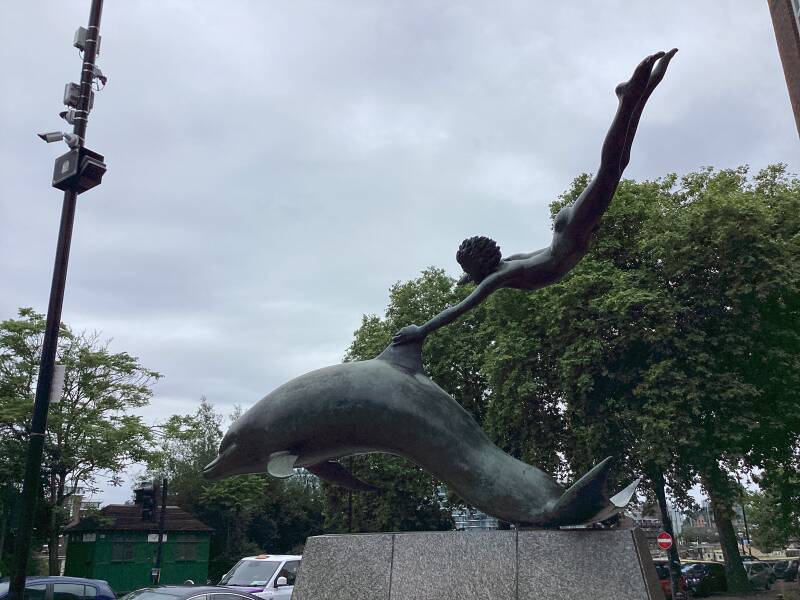
The piece was created by Sir David Wynne; a self-taught artist who established his studio on Campden Hill, Holland Park in the early 1960s.
oakley st.
Baron CADOGAN of OAKLEY in the COUNTY OF BUCKINGHAMSHIRE was one of the titles given to WILLIAM CADOGAN
They lived in oakley street…
Speranza (jane francesca Lady wilde)
Poet and Irish patriot. Mother of OW. During his process he took refuge here, because hotels were refusing to put him up
Captain robert falcon scott
Antarctic explorer. He led his men to the S.Pole only to find that Norwegian expedition had beaten them to the prize.
A blue plaque is on the front of 42 Oakley Street, a house where Marley lived with his band the Wailers for a short time in the late 70s. When they were not recording they would make the short trip over the Albert Bridge to play football in Battersea Park.
Marley and punk

The recent release of the film One Love, the biopic of Bob Marley, provoked a small debate in the pages of the Guardian newspaper as to the star’s engagement with British punk during his sojourn in the UK, recording the Exodus album.
MARLEY AND Politics

Variation: Turn right into phene st., RIGHT INTO OAKLEY GARDENS, AND RIGht INTO CHEYNE GARDENS
Dr John Samuel Phene FRIBA, FRGS (1824-1912) was architect, property developer, traveller, collector, scholar and antiquarian and he was, indeed, a local character…
The Daily Telegraph had called this pub "George Best's second home". It must have been, in the 70s, quite a landmark in an otherwise quiet district.
More recently it was owned by the property developer Robert Bourne, who in 2012 applied for planning permission to turn it into a £15 million house.[2] A campaign was set up by local residents to save it (amongst those locals, SOL CAMPBELL and HUGH GRANT). In 2013, it was announced that the pub had been saved from closure.[3] At the rumoured cost of £4 million, it represented the first London acquisition for new owners The City Pub Company.
Oakley gardens… on the site of the royal tudor manor…
In the mid-nineteenth century Oakley Crescent (later Oakley Gardens) was constructed to the west of Manor Street on the site of a former Dairy House that was originally associated with Chelsea Manor. Oakley Crescent was developed around a garden square and contained terraced houses to the north and south. To the west of the site small terraces framed the junction of Phene Street, and in the two corner plots semi-detached houses were laid out diagonally to face the square (one of these has subsequently been turned into a single house).The garden square was infilled not long after the original development. In the mid-to-late-nineteenth century the area was undergoing rapid development in order to meet the high demand for residential property. The first edition of the Ordnance Survey map in 1862 shows the garden square under construction. Terraced houses had been partially built on the south and north sides of the plot, and two buildings constructed fronting Manor Street. By the second edition of the Ordnance Survey map in 1894-95, the square had been completely laid out to form the present site.
cheyne gardens, a plaque dedicated to king henry viii (see later)


lbtc official route,
After BOB MARKEY’S ADDRESS, LEFT turn along cheyne walk

Site of the TUDOR ROYAL MANOR. And guess who was its lord…
A short note about henry viii and his main attainment: the creation of a new church
CHELSEA and it’s Old Church - or Chelsea Parish Church as it then was - was well known to Henry VIII. He could hardly miss it on his frequent river travels between HAMPTON COURT and WESTMINSTER. The KING’S HEAD AND EIGHT BELLS pub got its name - or half of it - from this royal customer. The King's barge would be beached (no embankment in those days) to allow him to stretch his legs or visit his friend Thomas MORE in this village of Tudor palaces. It is said that Henry married his third wife JANE SEYMOUR in 1536 in Chelsea's oldest church.
Henry was very knowledgeable about the Christian religion. His title Defender of the Faith (Fidei Defensor) was given to him by a grateful Pope for his refutation of Luther. Until the end of his life Henry regarded himself as a Catholic and even after his break with Rome, Protestants suffered terribly.
Henry broke with Rome partly because the new Tudor dynasty needed an heir and partly because he felt that by marrying his late brother's Aragonese wife, CATHERINE, he had broken the law of God.
Like his father, Henry VIll valued education and was well read. His permission for the ENGLISH BIBLE to be published owed more to his Renaissance humanism than to any sympathies for the Lutherans.
HE started the CHURCH OF ENGLAND?. He certainly broke from Rome and took for his own government all the taxes and dues that would have gone to the Pope. His son EDWARD VI, heavily influenced by Protestant teachers, and the CofE became A PROTESTANT CHURCH. But died young and then MARY (HENRY’s oldest sibling ) repaired the breach between Rome and London/Canterbury.
So, if anyone can be said to have founded Anglicanism, as a religion, it was ELIZABETH I. She tried to be as inclusive as possible and not to inquire into people’s hearts for every detail of their doctrines. The broad church character of Anglicanism, its width and tolerance comes not from Henry but from his wiser and younger daughter.
The manor

Or the NEW MANOR HOUSE, as it used to exist an “OLD” one. A 2 storey brick mansion, including halls, parlours, drawing rooms, kitchens and cellars, and 17 chambers. With high chimney stacks, and partly castellated roof line.
in HENRY VIII years it would become a sort of dower house, for discarded wives, and nursery for their children: EDWARD (the residence was a gift to his mother, JANE SEYMOUR, who died within a year) and ELIZABETH where living here under the guardianship of a lady of the court. A studious 11 years old, JANE GREY visited here CATHERINE PÁRR, the king’s last wife, who as widow, lived in the manor, which she received as a marriage portion.
The DUKE OF SOMERSET, LORD PROTECTOR and brother, THOMAS SEYMOUR (who dreamed of a marriage with ELIZABETH) visited. Both lost their heads, but their widows were permitted to live here.
ANNE OF CLEVES was the last royal here, spending her last years in Chelsea .
Chelsea became a favourite place for Tudor courtiers to build their estates near to the King. One of Henry VIII's closest friends and advisors was THOMAS MORE, was, in fact, who began the fashion of moving to Chelsea.
For example, the seventeenth century saw the construction of Lindsey House, Danvers House, Shaftesbury House, Winchester House and Gorges House, as well as the Royal Chelsea Hospital. Come the early eighteenth century, according to Daniel Defoe, the neighbourhood was known as the village of palaces.
By the way: Was the MORE CHAPEL in the OLD CHELSEA CHURCH the scene of a Royal wedding?.

ELIZABETH granted the house, as a grace and favour, to LORD HOWARD OF EFFINGHAM, victor of the ARMADA, and she visited him here. At that time ROBERT CECIL occupied the former dwelling of THOMAS MORE, very close-by after having inherited from LORD BURLEIGH.
The MANOR became “BUCKINGHAM HOUSE” when the 1rst DUKE occupied it. Then, seized by the COMMONWEALTH. Then sold to the MARQUESS OF WORCESTER, who, in becoming DUKE OF BEAUFORT, changed the name: BEAUFORT HOUSE. For JOHN EVELYN all the improvements in the house were a waste of money. Instead he liked the improvements made by CHARLES CHEYNE, helped by the dowry brought by his new wife LADY JANE CAVENDISH.
Their son though did not like Chelsea so sold most of his land holdings to a DR.SLOANE.
Dr. SLOANE was SIR HANS SLOANE.He purchased the estate and demolished the buildings, except INIGO JONES’S GATE, which SLOANE presented to LORD BURLINGTON and that you can admire in CHISWICK GARDENS. See next chapter for a long DIVERSION, WESTWARDS, for CHISWICK and more.


Sir hans sloane
Physician (fellow of the ROYAL COLLEGE, at 27), collector, benefactor. Born in COUNTY DOWN, became personal physician of the DUKE OF ALBEMARLE, GOVERNOR of JANAICA. After returning to England with hundreds of plant and animal specimens he had collected, he exhibited then in 4 BLOOMSBURY PLACE, BLOOMSBURY. Some were presented to the <<<<CHELSEA PHYSIC GARDEN, the APOTHECARIES GARDEN, in CHELSEA, which he often visited.
His professional practice , in BLOOMSBURY, flourished, as he was patronised by the rich and he raised to become QUEEN ANNE’s and GEORGE I’s doctor.
With this success and wealth his collection expanded:read his WILL and you will find out…He, who was called THE GREAT COLLECTOR, by contemporaries, handed everything to the nation and this formed the basis for a new museum, which had to be open freely to the public (HORACE WALPOLE commented unfavourably about the collection, though)
In fact, his house here was a huge museum, after he moved to CHELSEA, permanently, at the age of 80. When he died he was buried in the OLD CHURCH graveyard, a simple stone urn that survived the BLITZ (while the rest of the church was destroyed).
Sloane’s herbarium, now in the natural history museum
During his voyage to Jamaica, Sir Hans Sloane collected the first plant specimens to be brought back to England from the region. The specimens were mounted in seven bound volumes, which have been preserved intact. They remain an invaluable resource for both scientific and historical research. SIR HAND’ HERBARIUM is one of the oldest pressed-plant collections in the world. Part of its great scientific value is that it contains many "type" specimens - the original example of the plant that was used when the species was named.
The sugar cane and cocoa Sloane collected himself later served him to make money: when Sir Hans first encountered cocoa he saw locals drinking the bean with water but he found it too bitter and took to mixing it with milk and sugar – the birth of milk chocolate.by patenting the recipe for chocolate.
Another "type" is the camellia, which a botanist brought from Japan.
back to the subject of property…
Remember: the. CHEYNES owned the property, after the CROWN, and before SIR HANS. He came to live here with his 2 daughters, and one of them , SARAH, married into the STANLEY FAMILY, of PAULTONS. The other, ELIZABETH, married the descendant of a WELSH prince, CADWGAN AP ELYSTAN, a CADOGAN.
The manor, thus, was divided. However, eventually, most of the Chelsea land would be concentrated in the ownership of the CADOGANS.
Sloane Sq. part of the CADIGAN ESTATE. You will be passing close to it. You might want to have a look…
A very well keep secret in London is that large chunks of the capital belong to historical estates, owned by aristocratic, wealthy families, or institutions. The CROWN ESTATE is an example.
The property freehold is owned by a landowner, and the land is let to leaseholders for a fixed term (subleases are possible, and occupiers, as well).
Here, in CHELSEA, the CADOGAN ESTATE owns 90 acres.
SLOANE SQUARE and CADOGAN SQUARE belong to the same block, extending from KNIGHTSBRIDGE down to S of SLOANE. SQ. To the W, both side of KING’S RD, as far as BEAUFORT ST.
Freeholders allowed (let say 2 centuries) builders to invest and build, and make some money (or go bust). But they increased of the value of the land without spending a single penny!.
Under the 1993 Actt of Parliament leaseholders have the right to buy their freehold with certain conditions. The old estates might be treated with extinction…
By the way: The EARL used to live in 28 CADOGAN SQ. His son, in SMITH ST.

Expore A little further down cheyne walk and ALONG THE EMBANKMENT
CHEYNE WALK,CHEYNE GARDENS, CHEYNE COURT?. Mr.CHEYNE was the LANDOWNER
Lord CHEYNE, LORD MAYOR of LONDON was the landlord here. Son WILLIAM inherited and commenced setting out building plots, and …the commercial value of the land began to be realised.
Cheyne walk
Beautiful Georgian houses.
RESIDENCE OF the Cypriot high commissionER
The miser John Camden Neild lived there from 1814 until his death in 1852.

No.16 Carlyle, Mazzini, more, erasmus
Each panel shows the patriarch of a Chelsea household alongside a very good, foreign, friend who was often"put up" in that household. This pair of paired portraits commemorates, not just 4 illustrious men of history, but also long-lasting male friendship across national borders.
From Byronico we learn that Mazzini lived in a number of different Chelsea addresses at different times (although Cheyne Walk itself does not figure). He was good friends with Thomas Carlyle and would sometimes stay overnight at 24 Cheyne Row. See next chapter for CARLYLE. Thomas More lived in Chelsea as is well-documented on about 6 other memorials to him in the area, and Erasmus was a good friend who stayed with him when in London.



The sundial between these two double portrait plaques is headed "Lead kindly light", words from a Cardinal Newman hymn.
Giusseppe mazzini in clerkenwell
Rossetti & swimbUrne at the QUEEN’S HOUSE (TUDOR HOUSE)


The PRE-RAFAELITE poet and painter converted it into a temple of AESTHETICISM, and kept a menagerie of exotic animals here.
Writer Meredith used to live here, as well. What a trio of BOHEMIANS. A few years ago, JOHN PAUL GETTY II
THE PRE-RAPHAELITES

Founded in 7 GOWER ST., BLOOMSBURY, a daring and revolutionary art movement, which praised the Italian painters of the QUATTROCENTO (preceding RAPHAEL) and dismissive of POST-RENNAISSANCE ART and most Royal Academicians.
MILLAIS, HOLMAN HUNT and ROSSETTI wanted to take membership numbers to 7 (mystical), so they invited COLLISON, STEPHENS, WILLIAM ROSSETTI and WOOLNER. PRB letters was their (secret meaning, for a short period) insignia.
On the embankment…victorian TOWN HOUSES
Examples of the finest domestic architecture, by the great RICHARD NORMAN SHAW
Garden corner
Designed for the tea magnate HORNIMAN
Dutch Renaissance. VOYSEY redesigned. Owned by SA royal, Paul Gregory, asking price £6.85. In 2013, £17.95
swan house
Decorated by W.MORRIS, For WICKHAM and ELIZABETH FLOWER. CHARLES and DIANA’s wedding presents stored here.
cheyne house

Between June 1916 and April 1918 some 366 patients had received treatment here, aconvalescence hospital

More about RICHARD NORMAN SHAW and the arts and craft movement
The thames, in chelsea
The same water that brought TH.MORE to the TOWER. The water which heard the first performance of HANDEL’s WATER MUSIC. The one carrying Kings and Queens. The one inspiring WHISTLER and TURNER.
Rowing boats, steam vessels, wherries, barges… were familiar in the 19th c. STEAMBOATS (PADDLESTEAMERS) to the CITY, every 15 minutes (GREAVES’ painting). Wharves and jetties.
A highway, a workplace, a pleasure ground…a visual adornment !
CHELSEA EMBANKMENT: A GEORGIAN RIVERSIDE FISHING VILLAGE… swept away
Before the building of the CHELSEA EMBANKMENT (thank you, Mr.BAZALGETTE!) the site of this sort of fast way along the river Thames was a beautiful river bank, whose shores were crowded by fishing boats… the Thames water, lapping the edge of the houses…
How do I know?. There are plenty of paintings…artists favoured this are for its beauty!

Chelsea embankment gardens. Thank you, AGAIN, mr.bazalgette
We own to JOSEPH BAZALGETTE the conception of the LONDON EMBANKMENTS, concealing the new huge sewers. Here, in CHELSEA, it was built 1871-74.
In CENTRAL LONDON, the EMBANKMENT conceals as well the LU tunnels. Think about the stretch around EMBANKMENT LU Station and the VICTORIA EMBANKMENT GARDENS.
Machine gun memorial
BEFORE THE EMBANKMENT
Doggett’s coat and badge race
From the south bank…
Doggett's Coat and Badge is the prize and name for the oldest continuous rowing race in the world. Up to six apprentice watermen of the River Thames compete for this prestigious honour, which has been held every year since 1715. The 4 mile 5 furlongs (7.44 km) race is rowed on the River Thames upstream from London Bridge to Cadogan Pier, Chelsea, passing under a total of eleven bridges. The winner's prize is a traditional watermen's red coat with a silver badge added, displaying the horse of the House of Hanover and the word "Liberty", in honour of the accession of George I to the throne. In addition, each competitor who completes the course receives a miniature of a Doggett's Badge for their lapel in a ceremony at Watermen's Hall.



Back to the original lbtc route…
Cheyne gardens

The Henry VIII Manor’s wall remains are behind the branches to the left of the artist’s studio house
cheyne court, rosSetti garden mansions

Site of RADNOR HOUSE, EARL OF RADNOR’s seat. His widow married LORD CHEYNE.
Old houses and gardens. In GEORGE PLACE artisan cottages stood in the middle of CHEYNE CT. ESTATE.
ST.LOO AVENUE
St. Loo is a resort town on the south English coast, commonly referred to as the English Riviera and is a setting for several Agatha Christie stories.
The avenue was created after the mansions were built, and named after the redoubtable LADY OF ST.LOO, better known as BESS OF HARDWICK, COUNTESS OF SHREWSBURY (1518-1608), and wife of the Earl, whose site was SHREWSBURY HOUSE. She inherited the estate of her husband, as she had done with the estates of previous 3(!) husbands.
Her family seat was HARDWICK HALL. Well, she was the wealthiest woman In England after QEI


Christ Church itself was built in 1839 and quickly established its Sunday School, initially only for boys and in rented premises in Flood Street. Then Lord Cadogan donated the land directly opposite the church and schools for boys and girls were built by 1843.
British History On-line gives: The land was given in 3 tranches: that south of Robinson Street; 1851 that north of Robinson Street for an infant school; 1869 that south of Caversham Street for a playground. The girls' school was enlarged in 1872.
The school's website: "In 2002 a large rebuilding program began and the school was rebuilt over the following three years but the original facade remains."
Anna kendall MEMORIAL sculpture

Erected by the parents’ subscription, in homage of the CHRISTCHURCH PRIMARY SCHOOL headteacher
Nearby, in tadworth square, lived mark twain

In London in 1900 he was in the inaugural train on the Central Line and opened the Kensal Rise library.
The family moved to London in spring 1899, following a lead by Poultney Bigelow, who had a good experience being treated by Dr. Jonas Henrik Kellgren, a Swedish osteopathic practitioner in Belgravia. They were persuaded to spend the summer at Kellgren's sanatorium by the lake in the Swedish village of Sanna. Coming back in fall, they continued the treatment in London
In mid-1900, Twain was the guest of newspaper proprietor Hugh Gilzean-Reid at Dollis Hill House, located on the north side of London. Twain wrote that he had "never seen any place that was so satisfactorily situated, with its noble trees and stretch of country, and everything that went to make life delightful, and all within a biscuit's throw of the metropolis of the world."
1839. Built to serve the new working class suburb ,as a chapel of ease, due to an overcrowded ST.LUKE’S, made a separate chapel 1860. Combined with ST.LUKE’S in 1986.
The parish, by the 1890s, was more populated, and with a different social character, with new mansion flats blocks being built and palatial houses around the Embankment, an artists’colony in its heyday.
Arch. EDWARD BLORE, extension by ARTHUR REEVE, new West front by CAROE, entrance porch by WOODWARD.
The HYDMAN TRUST funded the cost of the church (a fraction of the expenditure of ST.LUKE). The HYDMAN FAMILY owned extensive sugar plantations in the WEST INDIES, and slaves… but in a twist of irony, one very fine stained glass window has an image of WILLIAM WILBERFORCE
THE SURPRISE PH.

Established in 1853, the handsome, red-brick freehouse is steeped in swashbuckling history, taking its name from HMS Surprise, the captured French corvette, later used by the British Navy to sneak up on enemy vessels in the days of Admiral Nelson.
More recent years have seen The Surprise shrug off World War II bomb damage, and win loyal followings of scarlet-clad CHELSEA PENSIONERS and CHELSEA ART SCHOOL student-bohemians, and, rumour has it, house a pet lion in its upstairs rooms.
The landlord is JACK GREENALL, who used to own the PHEASANT in BERKSHIRE. The Interior design is by ISABELLA WORSLEY.
CHRISTCHURCH ST.
In 1971–72, the Cadogan Estate obtained planning permission to redevelop the Christchurch Street and Tedworth Square area, and in 1974 began demolishing houses. However, local campaigners and conservationists were able to get 26-52 and 60-76 Christchurch Street listed and stop the planned construction of two tower blocks of 33 storeys, 159 houses, and a 3-storeyed garage for 294 cars. In the House of Lords, William Cadogan, 7th Earl Cadogan called the terrace "nasty cheap little houses that were built a long time ago".
30-52 form a mid-19th century terrace of houses that have been grade II listed since 1974.
The actors Laurence Olivier and Vivien Leigh lived together at Durham Cottage, 4 Christchurch Street, from 1937 to 1956.

Now, that You are crossing TITE ST., A little extra EXPLORATION
Tite st.: OSCAR WILDE addressEs

By far, the most famous dweller. In no.44, in 1881, with friend artist FRANK MILES (introductor of Japanese flowers). Arch. GODWIN had to tone down his original design.
In 1884 he moved with newly married wife CONSTANCE LLOYD to no.34. He was at the heigh of popularity as a writer, as aesthetician, as a wit, as a literary critic. GODWIN was hired again, and he designed everything in all shades of white, apart some buttercup yellow, and some blue with painted dragons and peacock feathers.
And his writing desk was that of TH.CARLYSLE, in a primrose painted room.
Here OW met the son of the MARQUIS OF QUEENSBERRY, BOSIE, by whom he was infatuated (or they began their affair in the SAVOY HOTEL?). After unwisely suing the marquis (who had insinuated the affair) unsuccessfully, as he had some evidence, he was arrested, taken to BOW STREET, charged and eventually sentenced to 2 years of hard labour.
From the height of fame to notoriety, to imprisonment for homosexuality,, to bankruptcy, and finally, upon release, to exile… in a matter of months. A spectacular fall from grace!. His body reposes in the PÈRE LACHAISE cemetery, in Paris.

After his conviction, the house was looted and what was left of the writer’s possessions (especially a valuable library) were sold for £600, a pittance, to pay off court costs By the way, the judge that convicted him of gross indecency lived only a few doors away.
More of wilde in Chelsea
Dublin
The Oscar Wilde Memorial Sculpture is a collection of three statues in Merrion Square in Dublin, Ireland, commemorating Irish poet and playwright Oscar Wilde. The sculptures were unveiled in 1997 and were designed and made by Danny Osborne.[1]

Wilde, about fox hunting

"the unspeakable in full pursuit of the uneatable."
More famous people: An Artists’ colony

In the1870s, thanks to the laying out of the EMBANKMENT (Mr TITE, was a member of the METRO.BOARD OF WORKS, who impulses the project) this area became fashionable, and especially sought after by established writers and artists…
Spitalfields Life's post 'Whistler In The East End' has some exquisite drawings.
Former St.wilfred’s convent, pending REDEVELOPEMENT

On the site of GOUGH HOUSE, which later became a school, and later a hospital, and was finally demolished. Richard Gough (1655–1728), a rich merchant and director of the East India Company, who profited from the Hanoverian accession by gaining a knighthood and a seat in parliament. He built the area around what is now GOUGH SQUARE, CITY OF LONDON. DOCTOR SAMUEL JOHNISON leased the property where he elaborated the FIRST ENGLISH LANGUAGE DICTIONARY from Gough’s son Henry, who had been made a baronet after his father’s death and also inherited the seat in 1728.
Nos.35-37 GORDON HOUSE.

On the site of WHITE HOUSE, designed by GODWIN for WHISTLER. WHISTLER moved to no.33
Painter and printmaker, born in Worthen Street, Lowell, Massachussetts. His family moved to Russia in 1843 and he received his first formal art instruction at the Imperial Academy of Fine Arts, St Petersburg. Returning to America he learned the technique of etching as a navy cartographer. After studies in France he settled in London in 1859. Among his prolific works the most famous is probably 'Arrangement in Grey and Black' - better known as 'Whistler's Mother'. The lady herself, Anna, lived around the corner in Chelsea and proudly looked after him, while he carefully shielded her from a full understanding of the disreputable life that he was leading, such as the illegitimate son by a chambermaid.
What about WHISTLER in ROTHERHITHE?
No.33

AUGUSTUS JOHN lived at no.33. When he, a leading portrait painter, FIELD MARSHALL MONTGOMERY, he asked: Who is this chap: he drinks, he is dirty and I know they are women in the black ground” (MONTY was right on all three scores!).
Of all the larger than life characters that stalked the numerous schools, circles and salons of the literary and art world at the dawn of the 20th century the figure of Augustus John presents a towering archetype of the bohemian artist; wild, promiscuous, proto-type hippie, early new age traveller and commune patriarch - all on top of being the top portrait painter of his generation. Continue reading…
No.31

Born Florence, Italy. Prolific American painter, specializing in portraits. After 1910 he turned his attention to painting murals and watercolours of Alpine and Italian landscapes. Died Tite Street.
JOHN SINGER SARGENT painted here portraits of ELLEN TERRY and HENRY JAMES.
Tite St. was the scene of one of them

On 25 and 27 November 1974 the Provisional Irish Republican Army placed several bombs in pillar boxes and one in a hedge behind a pillar box. This was a new tactic used by the IRA in England, although a similar tactic had been used in Northern Ireland during The Troubles several times previously. 40 people were wounded from five explosions in several districts.
around tite street: PARADISE WALK and swan walk, slums.

And more Attractions nearby, just in cAse you wish to explore..
Around Royal HOSPITAL road
CHELSEA PHYSIC GARDENS
The second oldest medicinal garden in England was f.by the SOCIETY OF APOTHECARIES in 1673, for the study of plants employed for in curative properties. When the S.A. found itself short of funds, in the 1730s, SIR HANS SLOANE rescued it a presented to the APOTHECARIES SOCIETY on condition that 50 plants be given to the ROYAL SOCIETY every year.
A rock garden was created in 1772 from blocks of lava brought from Iceland.
And it was, originally established as an outdoor classroom to train their apprentices. Apothecaries were an important part of society, offering general medical advice and treatments often made from herbs. At the Garden apothecaries were trained to identify different plants, and to understand their uses. Until the 1970’s students training to be pharmacists, the modern-day apothecary, studied the uses of plants at the Garden.
There is a legend, though: I That of Gossypium hirsutum (cotton) seeds sailing across the Atlantic from Chelsea to Georgia in the 18th century to start the American cotton industry…KEEP READING the blog, and many more…
NATIONAL ARMY MUSEUM.
Its remit for the overall history of British land forces contrasts with those of other military museums in the United Kingdom concentrating on the history of individual corps and regiments of the British Army. It also covers the pre-independence history of the East India Company Army, the British Indian Army and other colonial units as well as housing the regimental or corps collections
MARENGO’s squeleton (NAPOLEON’s horse): from museum to museum
GORDON RAMSAY restaurant
Restaurant Gordon Ramsay, also known as Gordon Ramsay at Royal Hospital Road, is the signature restaurant of the British celebrity chef.
It opened in 1998 and was Ramsay's first solo restaurant.
In 2001 it was awarded three Michelin stars, and in 2022 Ramsay celebrated 21 years with all three.[1]In March 2013, the restaurant reopened following an art deco redesign under Chef Patron Clare Smyth.[2] In 2020, Matt Abé took over as Chef Patron, owning and running the restaurant as part of Ramsay's restaurant group.
Also Nearby, ST.LEONARD’S TERRACE
Georgian terrace, beautiful mid 18th.c.houses


BRAM STOKER. He published Dracula during his period living here (1897).
Later on, the house has been occupied by Norman Foster?
VICTORIA’S PENFOLD POST BOX
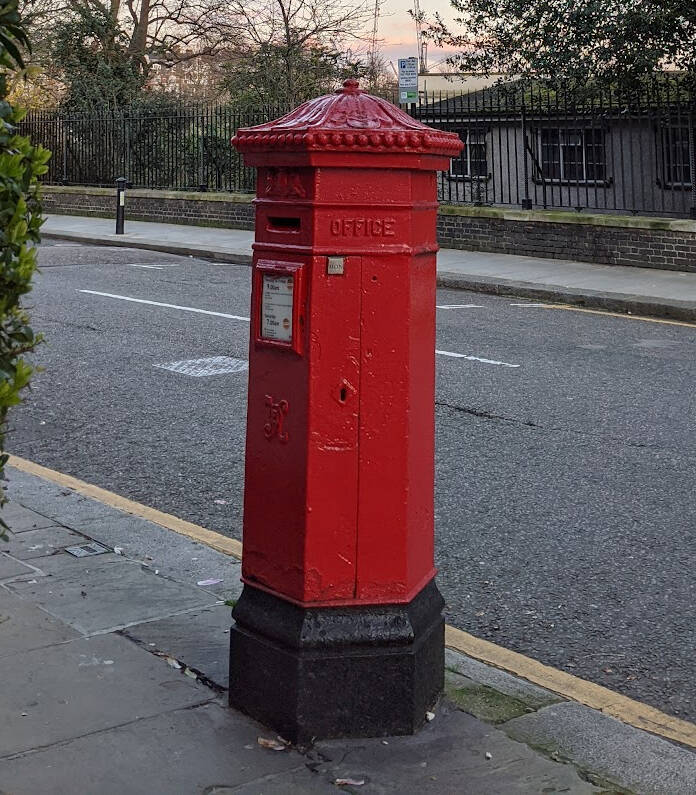
This hexagonal model (named after its designer) was handsome and practical but too expensive to produce. It was discontinued in 1879, but replicas were later introduced at places of historic or natural beauty.
Burton’s court
Playing fields for schools and cricket pitch used by the GUARDS’REGIMENTS. Mr BURTON was a very efficient porter here. It was planned a grand drive to the frontage of the RHC, but it was never carried out. It is owned by the RHC.
Royal Avenue, A ROYAL PROJECT (again, only a project)

Royal Avenue was laid out in the 1690s by William III with the intention that it form part of a proposed carriage way between the Hospital with Kensington Palace.[1] As the middle of the square was enclosed by a hedge and a small white fence, by 1748 it was known as White Stile Walk.
And Royal Avenue is the fictional home of James Bond in the Ian Fleming novels, says WIKIPEDIA.
ROSSETTI, RICHARD ROGERS and BERNARD STERN have lived here… really.
No.30. Joseph losey

Born Wisconsin, U.S.A. Film and theatre director. In 1952 he moved to England after being blacklisted by the House Committee on Un-American Activities. Directed three ground-breaking films, (with Harold Pinter as scriptwriter): The Servant (1963), Accident (1967) and The Go-Between (1971). Died at home, 29 Royal Avenue.
OPPOSITE was the location for his film THE SERVANT
Chelsea drugstore (MERCI, PARIS!… well, in fact it was a french take on an usa idea)
On the site of the WHITE HART PH (can you see a Victorian pub…somewhere hidden away?). First American style DST: stainless steel, brass, marble, mirrors…opening very long hours. “A gin palace turned a tin palace”.
By the way, when it opened up, J.LOSEY let a protest against rubbish, noise and hippies
The store is notably mentioned in The Rolling Stones song "You Can't Always Get What You Want", where Mick Jagger sings of meeting "Mr Jimmy" and in The Kinkssong "Did Ya", where Ray Davies sings "Now the Chelsea Drugstore needs a fix, it's in a state of ill repair". Chelsea Drugstore is also the title of a 2012 EP by UK band The Jetsonics [5] as well as it being a film location in Stanley Kubrick's A Clockwork Orange.[6]

The lbtc tour follows its course, along royal hospital road
Royal hospital, home to the chelsea pensioners

See next chapter
Duke of york square
Site of the DUKE OF YORK BARRACKS. Now, shops, eateries, flats and offices
The site is the former Duke of York’s barracks. It was vacated by the Territorial Army in 2003 and redeveloped to include a public square, housing and retail units. And the stunning Saatchi Gallery which shows some of the best and probably some of the worst contemporary art you are likely to see.
SAATCHI GALLERY
Iraqi-born Jewish brothers from London, Charles and Maurice Saatchi, who created some of the most memorable ad campaigns of the 1970s and 1980s, and then in 1994 were ousted from their firm by an American shareholder revolt

More about the area Nearby
SLOANE SQUARE

Sloane street
Why not a walk from SLOANE SQ. to HARVEY NICHOLS

Contrasts
PetER jones. 1930s


Lennox gardens

Cadogan square


KING’S ROAD. 1960s “SWINGING LONDON”. What about the 70s?: punk!

ENJOY A NICE WALK… just for you to know, it is a long one: the road ends in fulham!

Buses around sloane square andcalonk king’s road
NEARBY, along the king’s road
No.120 Mr.crapper, A CHELSEA businessman…

Laura Ashley was at 120 Kings Road, which until 1966 had been owned by the water closet manufacturer Thomas Crapper [1836-1910], who started in Marlborough Road (now Draycott Avenue) in 1861 and moved there in 1907. He was initially apprenticed to a plumber in Sidney Street, and later became plumber to Royalty following his highly successful invention of “Crapper’s Valveless Waste Preventer” with “Certain Flush with easy Pull.”
It has often been claimed in popular culture that the profane slang term for human bodily waste, crap, originated with Thomas Crapper because of his association with lavatories. A common version of this story is that American servicemen stationed in England during World War I saw his name on cisterns and used it as Army slang, i.e., "I'm going to the crapper".[13]
The pheasantry, now pizza express and Pheasantry music room
built in 1769. The façade was added in 1881 in the French style by the artist and interior decorator Amedee/ Lelix Joubert, a member of the Joubert family of cabinet-makers who owned the building. He also added the entrance arch that is supposed to be a copy of the Arc du Carrousel with its quadriga, a four-horsed chariot.
Its name derives from a game dealer called Samuel Baker in 1865
The Pheasantry is an historic Georgian building originally used to raise pheasants for the royal household.
It's had many distinguished residents including Augustus John and Annigoni. Famous ballerina Serafima Alexandrovna Astafieva opened her school here on the first floor in 1916. She taught prima ballerinas Alicia Markova and Margot Fonteyn here.
It was also the home of Eleanor Thornton, thought to have been the model for The Spirit of Ecstasy mascots on the bonnets of Rolls Royce cars.
In 1932 Rene de Meo and Mario Cazzini opened a members-only club restaurant on the ground floor and basement, which survived until 1966. Members included Francis Bacon, Aneurin Bevan, Marc Chagall, Cyril Connolly, Lucien Freud, Robert Newton, Gregory Peck, John Rothenstien, Dylan Thomas, and Peter Ustinov. [See Booklet by Nesta Macdonald]Dylan Thomas used to drink here when it was a club in the 1930's.
In 1976 the six-year campaign to save The Pheasantry from dereliction reached a peak. Under the patronage of Sir John Betjeman, the Friends of The Pheasantry wanted the building restored with residential studios, an art gallery, and exhibition space. They were not successful in preventing the adjoining development, but the front and gateway of the Pheasantry survived, heavily restored, as part of the rebuilding of 1971-81, forming a restaurant hemmed in by shops and offices.
The Pheasantry nightclub was the venue for early UK gigs by Lou Reed, Queen (band) and Hawkwind, among others, and was the place where singer Yvonne Elliman was discovered by Andrew Lloyd Webber and Tim Rice, leading to her role in the original soundtrack recording of Jesus Christ Superstar.
Eric Clapton lived on the top floor in the late 1960's. In his latest autobiography he tells of visits from George Harrison where they would take acid and write songs. On one occasion Eric narrowly avoided arrest on drug charges by fleeing out of the back of the building just as Sergeant Norman Pilcher, a detective with a knack for arresting rock stars, buzzed the intercom with 'postman, special delivery' and burst in.
WELLINGTON SQUARE
Another JAMES BOND possible address?
Built in the 1850’s by Francis Edwards, the elegant terraces on either side of the square facing Kings Road were built some ten years earlier. It was named in honour of the Duke of Wellington whose body had lain in state in the Royal Hospital.
Aleister Crowley, the satanic author, lived at 31 Wellington Square, as did the fictitious James Bond.
the birth of the miniskirt
markham house, mary quant’s bazaar
138a Markham House: Originally residential and occupied by solicitors, in November 1955 Mary Quant, Archie McNair and Alexander Plunket-Greene bought the freehold of the basement and ground floor of Markham House, later The Markham Pharmacy, on the corner of Markham Square, for £8,000 (now worth about £9.5 million). and split it into two businesses, Bazaar and Alexander's 1955 - 1969: The shop was an immediate success, largely due to the fact that their inexperience had them selling their clothes and accessories too cheaply, not only affecting their profits but also annoying other local retail outlets, a 'mistake' that was quickly rectified, but not before the boutique had gained a significant reputation. After some of her designs were featured in Harper's Bazaar and purchased by an American manufacturer, Quant concentrated on designing and making more of the clothes she sold rather than buying the stock in.
Although Quant is acclaimed as the person who 'invented' the mini skirt, it is more factual to say that she popularised the description after allegedly naming her short creations after her favourite car, even though the term had previously been used as early as 1920, by the Daily Express and other newspapers, to describe the (relatively) short skirts of the time. In her 1966 first autobiography 'Quant by Quant', the term 'mini-skirt' isn't mentioned at all. She is also credited with either 'inventing' or popularising the accompanying coloured or patterned tights and, later in the decade, the 'hot pants' fashion craze. "We were in at the beginning of a tremendous renaissance in fashion. It was not happening because of us. It was simply that, as things turned out, we were a part of it". Ronald Tuckerman estate agents occupied the rest of the premises. The basement initially housed a coffee bar / jazz club called Alexander's the sign to which can be seen on the image. The club Bosun’s Locker used to be here, as well, underneath Markham House. Around 1925, Markham House was occupied by G.F.Wilkins, solicitors.
Alexander’s italian restaurant
no.161 apple tailoring, the beatles’ shop
Apple Tailoring (Civil and Theatrical) which opened to the public on May 23rd 1968, was the latest addition to the Beatles growing Apple group of companies – they already had a boutique on Baker Street.
The Beatles had known the shop for a while. Before their involvement, it was called Dandie Fashions. ‘Dandie Fashions’ was the brainchild of John Crittle. He arrived from Australia around 1964, and it didn’t take John long to get himself established amongst London’s young and hip in-crowd. A fortunate turn of events landed John his first real employment was at ‘Hung On You’at 22 Cale Street, Chelsea, just off the Kings Road. It later became Jane Asher’s Cake Shop.
no.107 club dell’aretusa
c.1967 - 1970. This was an elite establishment and allegedly the location of John Lennon's first public appearance with Yoko Ono at the pre-launch party for Apple Tailoring, held on 22nd May 1968. In 1967 Alvaro Maccioni had teamed up with Enzo Apicella and Mino Parlanti to open the large, members-only bar / restaurant / discotheque. A double-page spread in the Evening Standard asked "Are you one of the beautiful people? Simple test: Can you get in to the dell'Aretusa?". The establishment attracted diners such as Princess Margaret, Sammy Davis Jr, David Bailey and Twiggy.
Flood street
No.85. Hall of remembrance

Often used as a rehearsal facility by Associated Rediffusion TV. The Beatles rehearsed here for the AR-TV special 'Around The Beatles' filmed at Wembley in 1964.
Opposite, THE COOPERS’ARMS

Nos.1-11 Chelsea manor studios
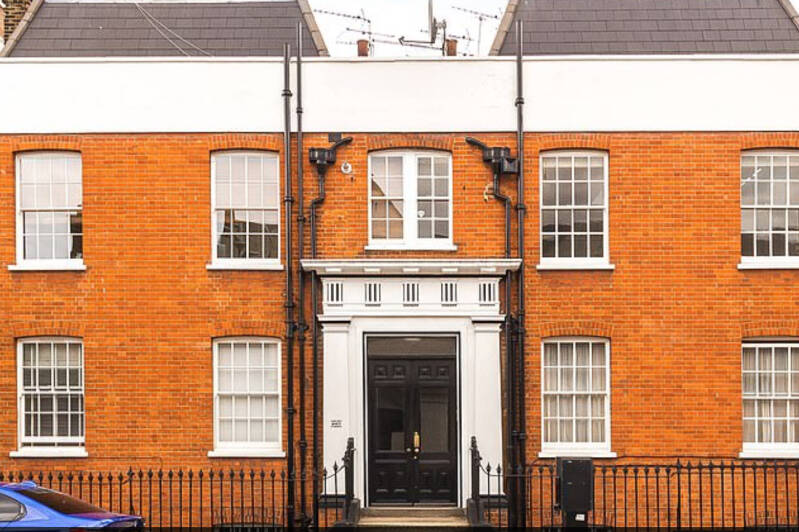
Chelsea Manor Studios opened in 1902 and, from 22nd July 1966, was 'home' to the photographer Michael Cooper, who occupied Studio 4 on the rear ground floor, hereva, on 30th March 1967, the photographic montage for the sleeve of The Beatles' 'Sergeant Pepper's Lonely Hearts Club Band' album was put together. Wax figures from Madame Tussaud's and other collage items were used along with the live subjects and the actual cover was a painting of that photograph. Cooper died young, in 1972, when the studio became a 'beauty school' and it was converted for commercial and residential use in 2002.
radnor walk
No.52 quorum
Quorum 1966 - 1969. Designer Alice Pollock first opened Quorum in Ansdell Street W8 in 1964, to be joined in 1965 by Ossie Clark and his future wife Celia Birtwell, who designed fashions and fabrics respectively. The Radnor Walk building also housed the English Boy male modelling agency on the second floor, run by Pollock and Sir Mark Palmer, a baronet, an Old Etonian and former page of honour to his godmother, the Queen. The first floor was occupied by Brian Jones and girlfriend Suki Potier. The boutique was well-known for its extravagant fashion shows, usually attended by celebrities such as The Beatles. David Gilmour (of Pink Floyd) was a delivery driver for Quorum for a while. In 1969, Alfred Radley became a partner in the business and Clark started designing for Radley as well as Quorum. The business was bought out by Radley later in 1969. It also occupied 113 Kings Road between 1969 and 1972
No.152-183 register’s office at chelsea old town hall
Chelsea Old Town Hall as it’s officially known, has hosted some starry weddings over the years. Famous faces who’ve said “I do” at Chelsea include footballer Bobby Moore, T.Rex frontman Marc Bolan, Pierce Brosnan, photographer Irving Penn, Sharon Tate & Roman Polanski, and Judy Garland. Perhaps the most famous wedding at Chelsea Town Hall was one which never actually happened. It was rumoured George Clooney and Amal Alamuddin were to marry at Chelsea after they posted their banns there, which had the press in a complete frenzy, camped out on the steps. The town hall essentially had to issue a statement to deny the wedding was taking place and to ask the press to p*ss off so as not to cause disruption for the mere mortals who were actually getting married there that day.
No.250
No. 245-253 former billiard hall, then antiquarius, antiques market. Juniper stall

Antiquarius c.1920: Part of the 'Antiquarius' building was originally a billiard hall, a fine example of Arts and Crafts architecture, built in the 1920s by the Temperance Movement. Along with the adjoining Chelsea Garage, a new garage at 15 Flood Street built in 1919 and disguised to look like an 'olde English' inn, it became home to a number of fashion boutiques and a conglomeration of about 150 antique dealers' outlets during the 1960s until fairly recently, when the entire building was let to Anthropologie, the US fashion chain. Many of the antique dealers of the old Antiquarius have now moved to the Antiques Centre at 58 Kensington Church Street.
No.398 king’s house, flat 5
No.350 BLUEBIRD GARAGE, Now restaurant

The garage was built in 1923 for the Bluebird Motor Company, designed to the very latest style by the architect Robert Sharp. At the time of its completion the garages were claimed to be the largest in Europe. At 50,000 sq ft (4,600 m2), there was room for 300 cars in the main garage, a further 7,000 sq ft (650 m2) was given over to workshops. On either side of the garage two further buildings contained lounges and writing rooms. The lounges were segregated for ladies, owners and chauffeurs.
Former sex store. Vivienne wesTwood
punk rock, born here!. And a NEW FASHION…




After seeing duke of york and crossing king’s road, Again Along the route
One of London’s foremost and best-loved bookshops, SANDOE’S offer a thoughtful and enticing selection of new books across the humanities, and a range of services that includes quarterly catalogues, mail order, subscriptions and private libraries.
John Sandoe opened his tiny Chelsea shop in 1957 with Félicité Gwynne, sister of the cookery writer Elizabeth David. It now ocupi es the two adjacent old shops too, with room for some 30,000 titles. Books are everywhere. An old customer, recollecting the shop’s earliest days, said that Sandoe’s had “all the books one could ever hope to find in one place”: the shop has grown but the ethos remains the same.
Magnificent VictoriaN brickwork: DRAYCOTT PLACE

Located in the Hans Town Conservation area, almost adjacent toSloane Square, Draycott Place is a row of striking red-brick late Victorian
townhouses built around 1892 in the Queen Anne Revival style.
With a 20ft frontages, the properties has a majestic façade with decorative architectural elements, including an imposing pedimented doorcase, emblazoned with mythical birds, swags and flora.

Nearby, more to see!
No 4 ANDERSON ST. Yes, MARX also lived in CHELSEA
Marx lived for a time after arriving in London in 1849 at 4 Anderson St, Chelsea, before moving briefly to a GERMAN HOTEL in LEICESTER ST., off Leicester Square, and then to lodgings at 28 DEAN ST., Soho, which are marked by a blue plaque. Other non-descript shovels in SOHO followed…An inheritance, allowed the family, in 1856, to move on to 9 Grafton Terrace in KENTISH TOWN, in 1864 to 1 Modena Villas, Maitland Park and then in 1875 to 41 Maitland Park Road, HAMPSTEAD where he later died. The Reading Room, where he worked most of the time, can be seen in the BRITISH MUSEUM. By the way, his fourth son, Henry, was born here on Guy Fawkes Night resulting in the nickname Guido.
TRYON ST
This was originally a footpath, known locally as “Butterfly Alley”, which separated two famous nurseries: John Colville, opened in 1793, and Thomas Davey. Colville is reputed to have introduced the Chrysanthemum from China. The Estates Gazette of October 1904 reported that from 1685 many French gardeners came over as refugees and established a number of nursery gardens in and around the Kings Road. By 1830 tea gardens, nurseries and market gardens lined the Kings Road. Tryon Street was originally called Keppel Street and was renamed in 1913 after Vice-Admiral Sir George Tryon.
Former queen victoria ph
Gastro-pub by TOM KERRIDGE

Elystan place, chelsea green, cale street
Ranelagh house
Modernist

The gateways
In more distinctive architecture, builtvin 1934, this a housing development designed by Wills and Kaula that now has a Grade II Listing.


Elystan… that must be welsh!
CADWGAN AP ELYSTAN GLODRYDD
(CADOGAN SON OF ELYSTAN GLODRYDD). Of the 5th Royal Tribe of Wales, Prince of Fferlys. The central component of the Cadogan Arms are those of Cadwgan ap Elystan's – the family's ancient ancestor.
Delicious CHELSEA GREEN. Shops & Eateries

Originally BOND ST., later renamed Cale Street in honour of Judith Cale, who died in 1717 and left a legacy for the benefit of six poor widows of Chelsea, the interest on which was distributed to them each Christmas Day.
Visit it in KENNINGTON, near LDTC BASE

Elystan st.: SUTTON DWELLINGS, social housing with stylE

The Sutton Estate, owned by Affinity Sutton, provided 462 flats for social rent in 15 blocks on a 1.5 hectare site. They were built in 1913 by William Sutton, a businessman turned philanthropist who had developed Britain’s first parcel delivery business. The blocks are in red brick with stone dressings in the Queen Anne style with mansard roofs and Georgian windows. There are shop units along the base of the blocks on Cale Street and Elystan Street. T
Social housing
Housing associations have their roots in early philanthropy and charity, dating back to at least 1235 when an almshouse in Cirencester was established to offer shelter for the seriously ill.
The modern housing association movement was born in the late 19th century, when Victorian philanthropists set up charitable housing trusts to help homeless people and alleviate poverty.
Many of today’s housing associations – such as Peabody, the Guinness Partnership and Octavia – were founded in this period.
A French TYRE company, in London?. MICHELIN HOUSE. now, offices and eateries
Michelin House was originally built as the Michelin Tyre Company’s UK headquarters, which opened for business in 1911. The building was specially designed by Michelin employee François Espinasse (1880-1925) and was part of the expansion of the Michelin brand across the Channel. Continue reading…
The tiled panels on the outside of the Michelin Building are admiring. Most show motor vehicles, but one of them features a bicycle.

Nearby, if you have timE…
A beatiful faÇADE… and if you walk along WALTON STREET You will find the real thing!
HARRODS depository

Walton street
I found out that an Azerbaijani crook lived in the street, according to WIKIPEDIA…Never mi d. Enjoy the shops. From here can cycle/ walk to HARRODS and you will like it…




































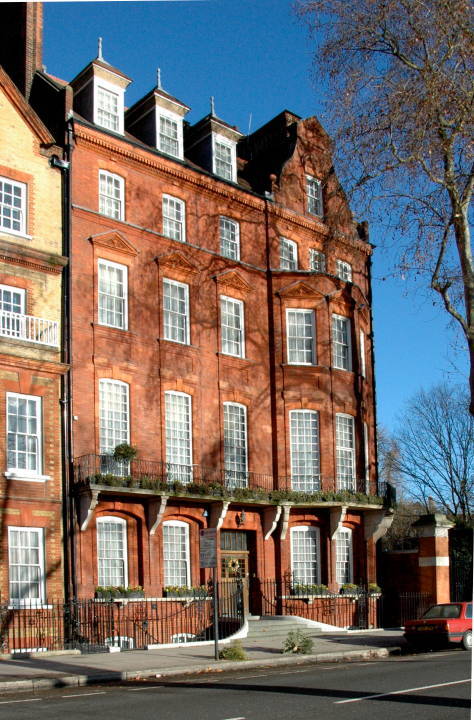







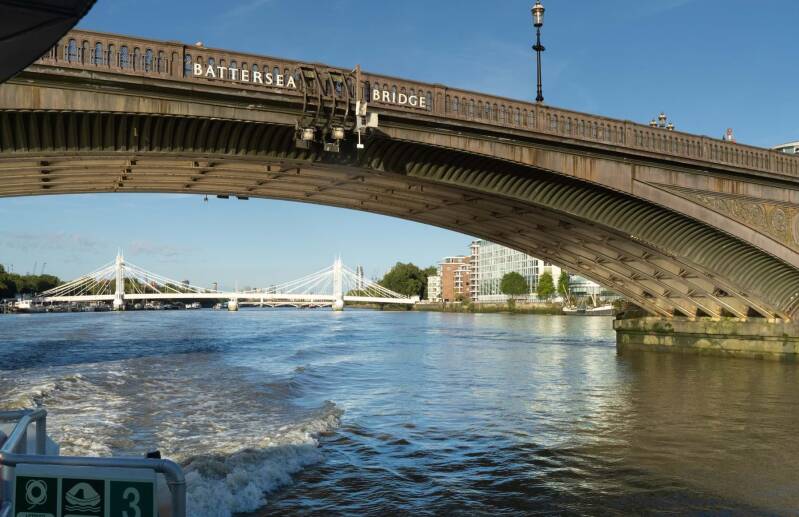










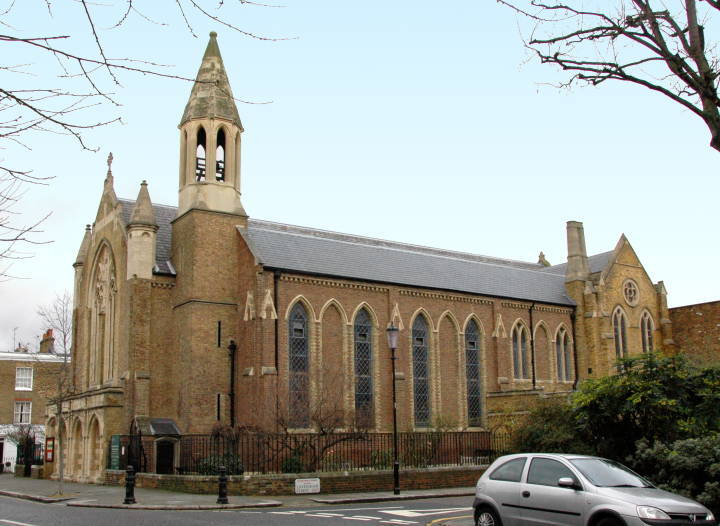






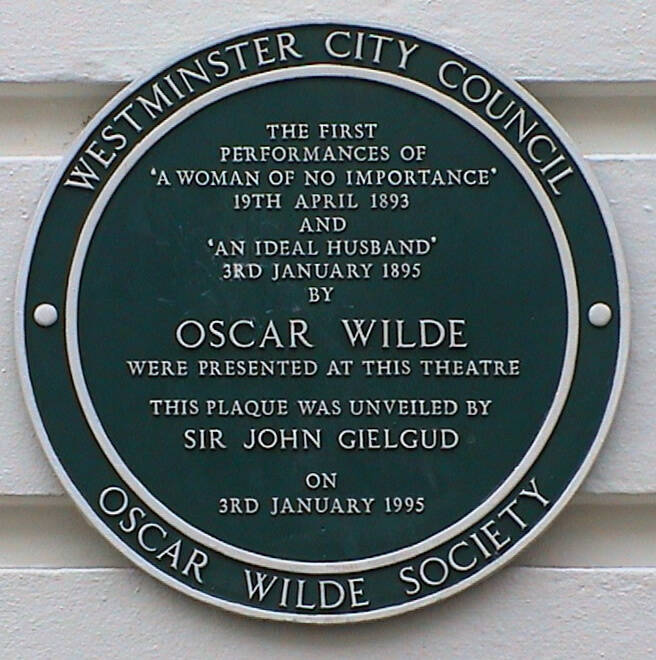


























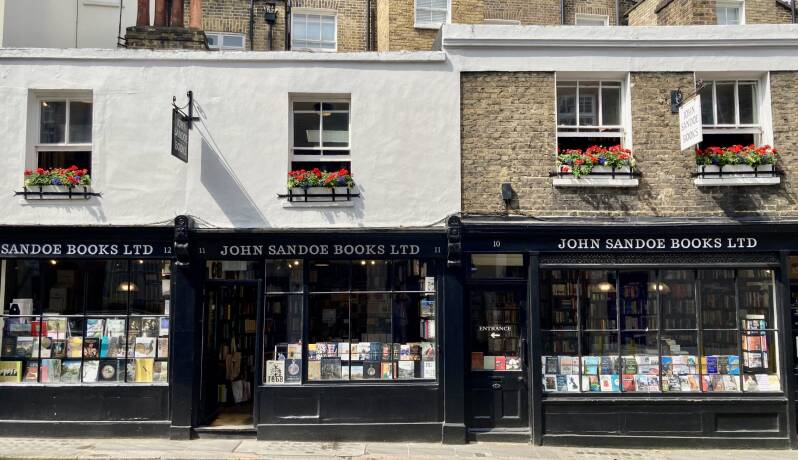














Create Your Own Website With Webador